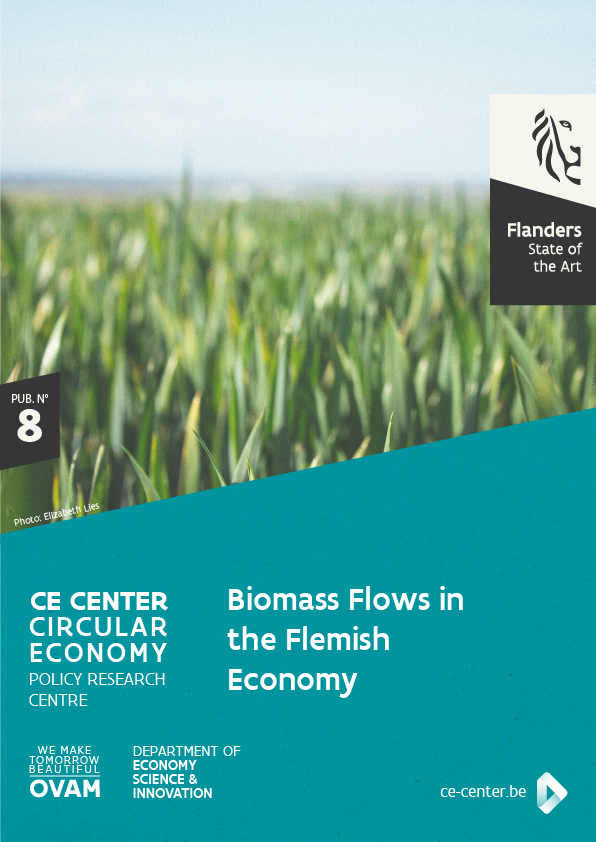8. Biomass Flows in the Flemish Economy
Biomass Flows in the Flemish Economy
Ive Vandereydt, Koen Breemersch (VITO), Kranti Navare (VITO)
May 2019
 This short-term assignment attempts to improve our understanding on the data availability of biomass flows within the Flemish economy and develops a methodology to approximate the flow of biomass between different industries. While there are already a myriad of measurements using bottom-up approaches to estimate the flow of biomass in the Flemish economy, said measurements often start from different data, can apply different assumptions and are therefore difficult to reconcile with one another to obtain an aggregate overview of biomass flows within the Flemish economy. The novelty and contribution of this study rests on the application of a top-down approach using existing macro-scale data on biomass flows in the Flemish economy from several official sources. These are combined with data on the 2010 supply and use tables of the Flemish economy that show how each Flemish industry/industrial sector uses and supplies different products, and reports the accompanying monetary flows. Based on these datasets, the biomass flow between industries is estimated from source to final consumption. In a next step, the top-down results of the biomass flows are cross-checked with the results of bottom-up analyses of the wood flows in the paper and pulp industry and an extensive analysis of wood waste flows to assess the validity of the top-down approach.
This short-term assignment attempts to improve our understanding on the data availability of biomass flows within the Flemish economy and develops a methodology to approximate the flow of biomass between different industries. While there are already a myriad of measurements using bottom-up approaches to estimate the flow of biomass in the Flemish economy, said measurements often start from different data, can apply different assumptions and are therefore difficult to reconcile with one another to obtain an aggregate overview of biomass flows within the Flemish economy. The novelty and contribution of this study rests on the application of a top-down approach using existing macro-scale data on biomass flows in the Flemish economy from several official sources. These are combined with data on the 2010 supply and use tables of the Flemish economy that show how each Flemish industry/industrial sector uses and supplies different products, and reports the accompanying monetary flows. Based on these datasets, the biomass flow between industries is estimated from source to final consumption. In a next step, the top-down results of the biomass flows are cross-checked with the results of bottom-up analyses of the wood flows in the paper and pulp industry and an extensive analysis of wood waste flows to assess the validity of the top-down approach.
While the top-down approach is suited as a tool to complement bottom-up analyses with insights into the most important economic downstream users and upstream suppliers, large discrepancies are found between the top-down and the bottom-up analyses. These result from the stringent assumption in the top-down analysis that applies a fixed conversion factor from money to mass for each industry. In the case of biomass, where certain flows can have a large mass but lower monetary value, these conversion factors cause estimation errors that cascade further down the supply chain. For a true overview of the biomass flows in an economy it is still first-best to attempt to reconcile all mass flows with a bottom-up approach. The macroeconomic flows reported in the supply and use tables can be used to obtain insights into the relevant goods/services providers to industries in order to obtain an idea of the relevant economic players that need to be considered during the bottom-up approach as potential linkages.
While there is a clear need to understand the biomass flows in the Flemish economy in order to maximize their potential and reduce unnecessary waste flows, our results indicate that combining currently available data sources is ineffective to garner insights into the macro-level biomass flows. The construction of a physical counterpart to the monetary input output tables, while challenging, can possibly offer the necessary reprieve.

.png)






